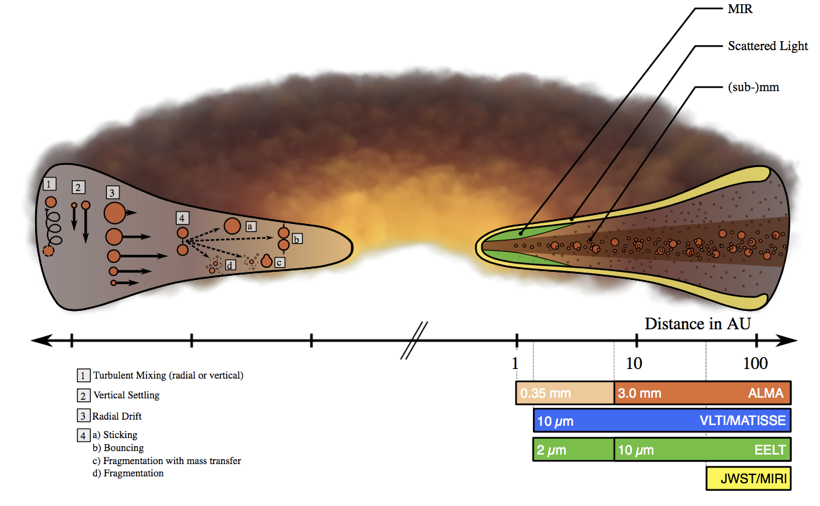Develop the algorithms to simulate growth/fragmentation

Dust grains of different sizes play very different roles in protoplanetary discs. Small, micron-sized grains are coupled to the gas, determine the opacity of the disc and trace the upper layers of the disc in scattered light observations by VLT-SPHERE and GPI. Larger, mm-sized grains are more decoupled from the gas, trace the midplane of the disc, and are what ALMA observes in continuum emission.
Up to now, due to the high computational cost involved, theoretical works have focused either on describing in detail the dynamics of these grains from 2D/3D simulations or to follow accurately how the collisions between grains modify their sizes. We propose for the first time to combine these two approaches of the dust dynamics, implementing dust coagulation in PHANTOM and FARGO. The extension to FARGO will be relatively straightforward since the previously mentioned coagulation calculations are already grid-based. For what concerns PHANTOM, recently our team has developed the algorithm MULTIGRAIN, which allows performing 3D simulations of grains with a large distribution of sizes.
With the usual two-fluid treatment of dust, considering coagulation is computationally prohibitive. With MULTIGRAIN we will include relatively straightforwardly the complete coagulation/ fragmentation equation in a full hydrodynamical simulation and simulate quantitatively the evolution of the entire dust distribution in a disc. In doing so, we will be able to revisit the whole theory of dust evolution in discs with self-consistent growing grains. We will also process our results with the multiple-wavelength radiative transfer code MCFOST to produce well-timed support for spatially resolved observations.
